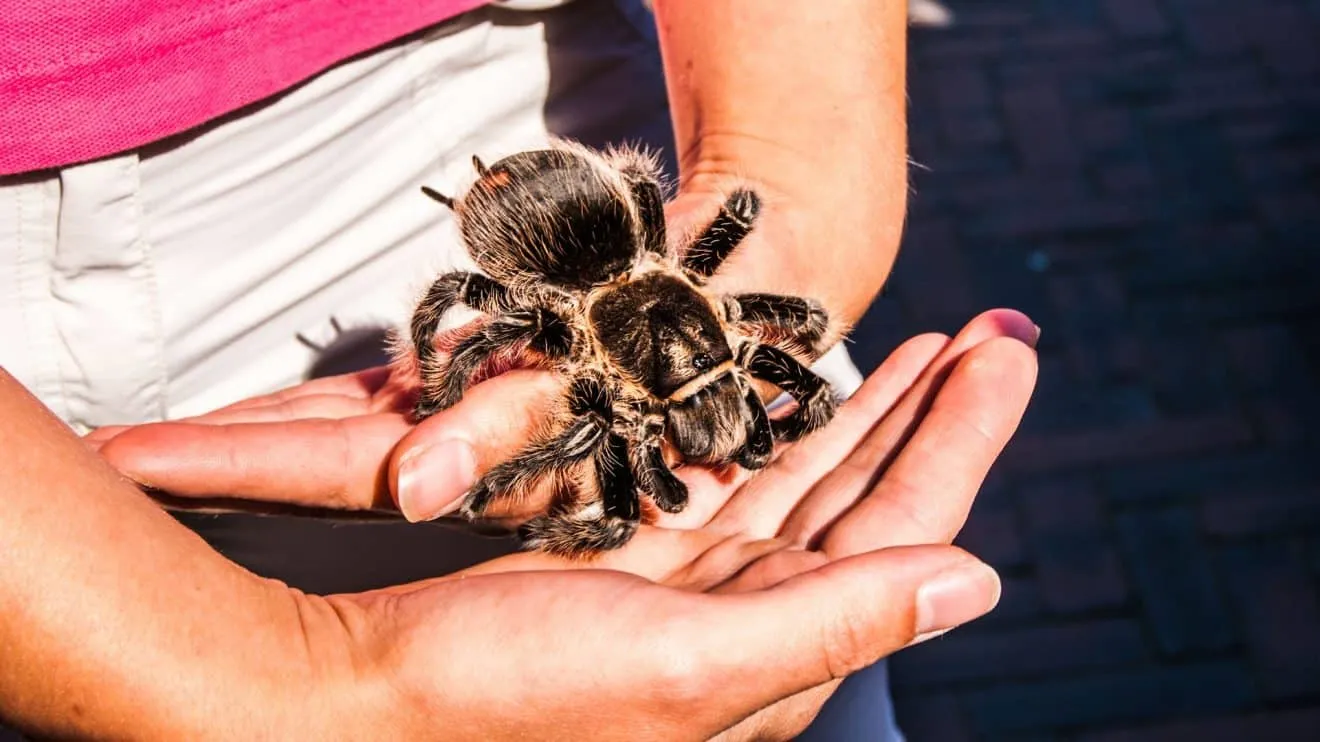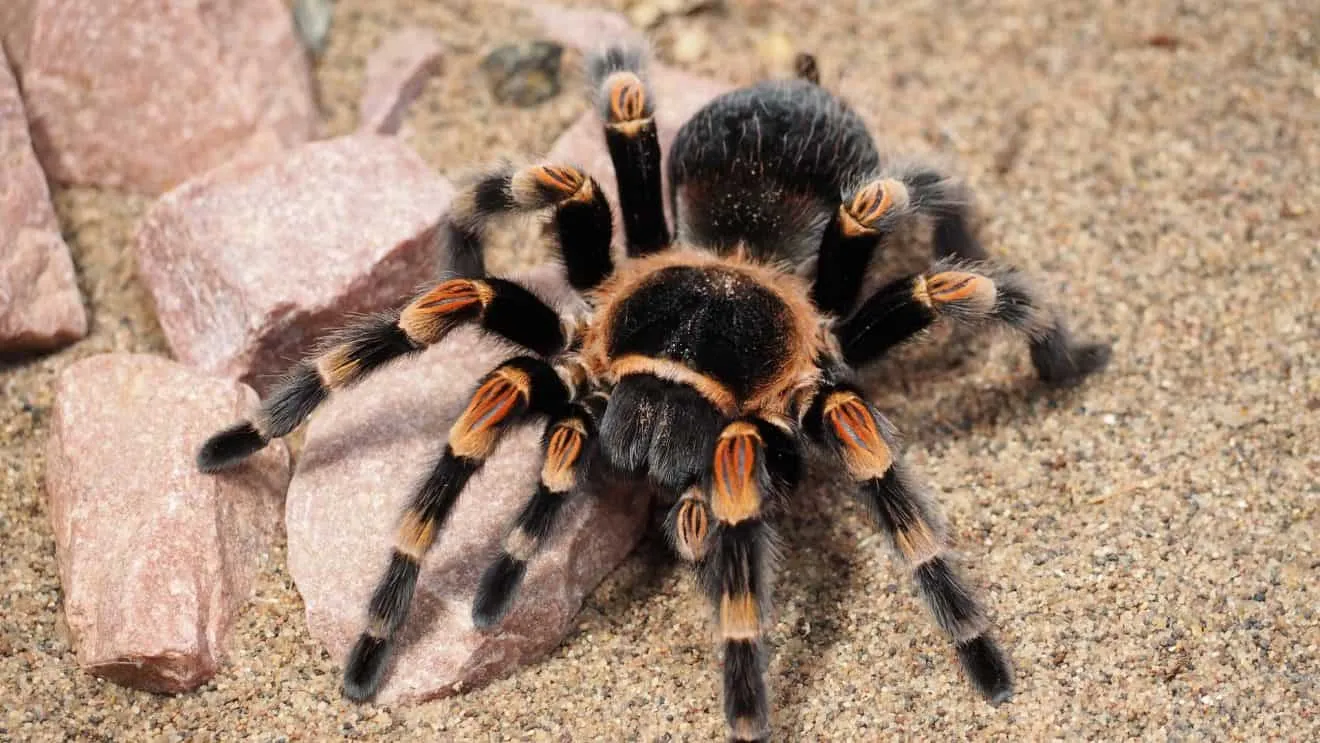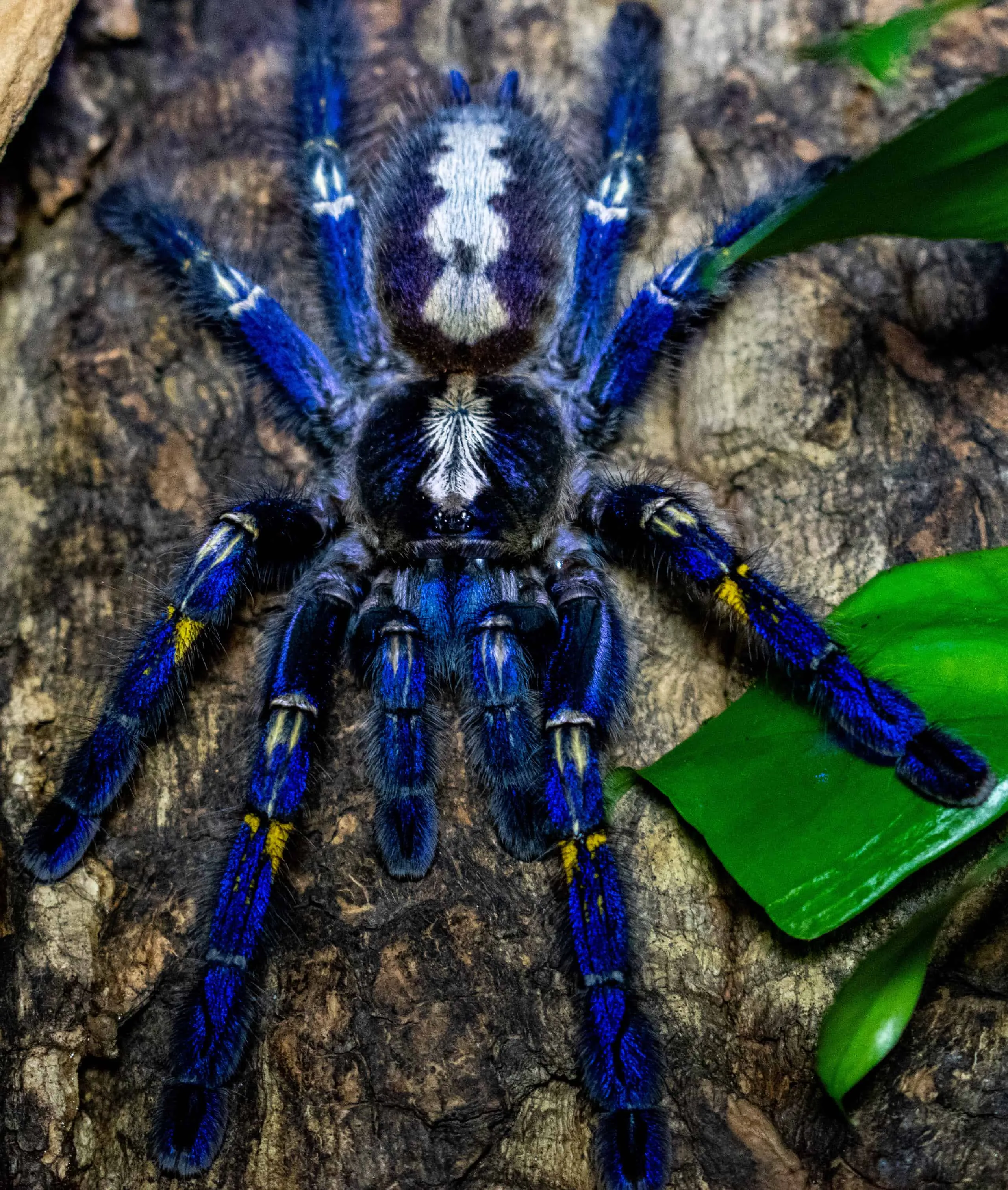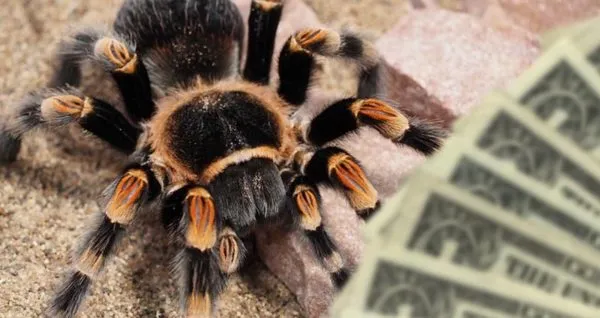Tarantulas, with their impressive size and often striking appearance, have captivated the human imagination for centuries. These fascinating arachnids, often misunderstood, are far more than just creepy crawlies. They are complex creatures with unique adaptations and behaviors. This article uncovers seven amazing discoveries about tarantulas, shedding light on their lives, habitats, and the secrets they hold. Get ready to be amazed by the world of tarantulas, where beauty and survival intertwine in a dance of nature.
Tarantula Facts Amazing Discovery 1
Habitat of Tarantulas
Tarantulas are found across the globe, thriving in a variety of habitats. The key to understanding their distribution is to look at the environmental conditions they prefer. These spiders are incredibly adaptable, allowing them to colonize diverse environments from the deserts of the southwestern United States to the rainforests of South America. The presence of tarantulas is often indicative of a stable, undisturbed ecosystem, making them an interesting subject for ecological studies. Their wide distribution is also a testament to their resilience and adaptability, allowing them to exploit different ecological niches.
Tarantula’s natural habitat

Tarantulas are typically ground-dwelling creatures, constructing burrows or utilizing natural shelters. Their habitats range from arid deserts, where they burrow deep into the sand to escape the scorching heat, to tropical rainforests, where they find refuge under logs or in the leaf litter. Some species are arboreal, living in trees and using silk to create nests or shelters. The microclimate within these habitats is crucial, as tarantulas require specific temperature and humidity levels to thrive. Understanding the specific habitat requirements of different tarantula species is essential for their conservation and management in both wild and captive settings.
Adaptations to Environment
Tarantulas have evolved a number of adaptations that allow them to survive in their diverse habitats. One of the most significant adaptations is their exoskeleton, which provides protection from predators and environmental hazards. This exoskeleton is composed of chitin and must be shed periodically through a process called molting to allow the tarantula to grow. Their bodies are covered in sensory hairs (setae) which help them detect vibrations, air currents, and other environmental cues. Coloration also plays a critical role, with many species displaying camouflage patterns that allow them to blend seamlessly into their surroundings, providing protection from predators and prey alike. In deserts, the ability to conserve water is vital, and tarantulas have evolved efficient mechanisms to minimize water loss.
Tarantula Facts Amazing Discovery 2
Diet and Feeding Habits

Tarantulas are primarily carnivorous predators, feeding on a wide variety of insects, arthropods, and sometimes even small vertebrates. Their diet varies depending on their size, species, and the availability of prey in their habitat. Tarantulas are ambush predators, lying in wait for their prey before launching a swift attack. The venom injected during a bite serves to paralyze the prey and initiate the digestive process. The feeding habits of tarantulas are fascinating, showcasing the interplay between predator and prey in the natural world. Their feeding behaviors, from capturing prey to consuming them, are a testament to their predatory prowess. The type of food is also a key factor to take into consideration.
Tarantula’s Diet
The diet of a tarantula primarily consists of insects, such as crickets, mealworms, and roaches, which are readily available in captivity. In the wild, their diet is much more varied, including beetles, grasshoppers, moths, and other arthropods. Larger tarantulas can also prey on small vertebrates, such as mice, lizards, and even small birds. The size of the prey often correlates with the size of the tarantula, with larger spiders requiring larger meals. Understanding the dietary needs of tarantulas is crucial for providing proper care in captivity, ensuring they receive a balanced and nutritious diet that supports their growth and overall health. It is a good idea to vary the food as well.
Feeding Frequency
The feeding frequency of tarantulas varies depending on their age, size, and metabolism. Juvenile tarantulas, which are actively growing, typically require more frequent feeding than adults. Young tarantulas may eat every few days, whereas adult tarantulas can go for extended periods without feeding. The feeding frequency also depends on the species, with some species known to consume food more frequently than others. Overfeeding should be avoided, as it can lead to health problems. A general guideline is to feed adult tarantulas once or twice a week, providing a meal that is appropriate for their size and needs. Always ensure that any uneaten prey is removed to prevent stress or injury to the tarantula.
Tarantula Facts Amazing Discovery 3

Life Cycle of a Tarantula
The life cycle of a tarantula is an intriguing process, marked by molting and growth. From a tiny spiderling to a magnificent adult, tarantulas undergo several stages of development. This includes the spiderling stage, juvenile stage, and the adult stage. The lifespan of a tarantula varies depending on the species and sex, with females often living significantly longer than males. Understanding the stages of the tarantula life cycle is essential to providing proper care, from the tiny spiderlings to the fully grown adults. The transformation of tarantulas from juvenile to adult is a slow process and very interesting to observe. The spiderlings will grow with each molt.
Molting Process
Molting is a vital part of a tarantula’s life cycle, a process by which they shed their exoskeleton to allow for growth. As the tarantula grows, it outgrows its exoskeleton. The process of molting is complex, where the tarantula forms a new, soft exoskeleton beneath the old one. When the time comes, the tarantula will secrete hormones to start the molting process. The old exoskeleton splits open, and the tarantula slowly emerges, leaving behind its old shell. During this process, the tarantula is extremely vulnerable to predators and must find a safe place to hide. It is also a period of considerable stress, and handling should be avoided. After molting, the tarantula will be much larger, with brighter colors, and will need time to allow its new exoskeleton to harden before it can eat again.
Reproduction in Tarantulas

Reproduction is an important phase in the life of a tarantula. The mating process involves the male creating a sperm web and transferring the sperm to his pedipalps. He then searches for a receptive female. The male will approach the female with caution, often tapping on her legs to signal his intentions. If the female is receptive, the male will mate with her, quickly inserting his pedipalps into the female’s epigastric furrow. Following mating, the female will lay her eggs in a silken egg sac, which she carefully guards and protects. The number of eggs varies by species, but it can range from a few hundred to over a thousand. Once the eggs hatch, the spiderlings will emerge and begin their independent lives. The process can take months to finish.
Tarantula Facts Amazing Discovery 4
Venom and Defense Mechanisms
Tarantulas are often feared for their venom, but their venom is not usually life-threatening to humans. They employ a variety of defense mechanisms to protect themselves from predators, including urticating hairs and defensive postures. The venom plays an essential role in subduing prey. Understanding the defense mechanisms and the effects of venom on both prey and potential threats is critical to appreciating the complete biology of tarantulas. It also influences how we understand the risks associated with handling tarantulas and how to minimize potential harm. Both defensive mechanisms serve to keep the spiders safe and increase their survival rate.
Venom Toxicity

The venom of tarantulas is primarily used to subdue prey. The toxicity of tarantula venom varies significantly between different species. Most tarantula bites are not considered dangerous to humans, causing only mild symptoms such as localized pain, swelling, and redness. Some individuals may experience more severe allergic reactions. However, tarantula venom contains various compounds, including enzymes and peptides, that can have different effects on different species. The effects on humans are usually mild and can be managed with basic first aid. It’s important to note that, while a bite is unpleasant, it’s rarely life-threatening. The severity of the reaction also depends on the amount of venom injected and the individual’s sensitivity.
Other Defense Mechanisms
Tarantulas possess several other defense mechanisms besides venom. They have urticating hairs (tiny, barbed hairs) on their abdomen. When threatened, they flick these hairs in the direction of the threat, causing irritation and discomfort. Many tarantula species also have a defensive posture, where they rear up on their hind legs, exposing their fangs. This posture is a warning signal. Tarantulas can also drop body parts as a defense mechanism to escape from predators. These various defenses help tarantulas protect themselves. Understanding these defense mechanisms is crucial for responsible tarantula handling and conservation.
Tarantula Facts Amazing Discovery 5
Common Species of Tarantulas

The world of tarantulas is incredibly diverse, with hundreds of different species. They vary significantly in size, color, and behavior. Some species are more popular as pets due to their docile temperament and striking appearance. Others are of great scientific interest due to their unique adaptations and ecological roles. The differences between these species illustrate the remarkable diversity of the tarantula family. They are found across the globe, with different habitats. The most common are also the most popular pet tarantulas.
Popular Pet Species
Several tarantula species are popular pets due to their relatively docile nature and striking appearance. The Chilean rose hair tarantula (Grammostola rosea) is one of the most well-known, due to its gentle temperament and low maintenance requirements. The Mexican red knee tarantula (Brachypelma hamorii) is also a popular choice, recognized for its vibrant orange markings. Other species, such as the Gooty sapphire ornamental (Poecilotheria metallica), offer a more exotic appeal with their unique color patterns. When choosing a pet tarantula, it is essential to research the specific needs of each species. Careful consideration should be given to their size, temperament, and habitat requirements. These animals are great to keep as pets if you know how to take care of them.
Rare and Endangered Species
Some tarantula species are rare or endangered due to habitat loss, the pet trade, and other threats. Efforts are underway to protect these vulnerable species and their habitats. These rare species are facing significant challenges. The conservation of rare tarantula species is essential for preserving biodiversity and maintaining the health of ecosystems. By supporting conservation efforts and raising awareness, we can help ensure the survival of these fascinating creatures. These species require very specific needs to survive. Careful and detailed research is important.
Tarantula Facts Amazing Discovery 6

Conservation Status and Threats
Many tarantula species are facing threats that jeopardize their survival. These threats include habitat loss, the impacts of the pet trade, and climate change. Understanding these threats is critical to implementing effective conservation strategies. A multifaceted approach is needed to ensure the survival of these species and their natural habitats. Recognizing the urgency and acting to protect these vulnerable creatures is essential to their survival. Conservation is an ongoing process that involves continuous assessment and adaptation.
Habitat Loss
Habitat loss is one of the most significant threats to tarantulas. Deforestation, urbanization, and agricultural expansion are all contributing to the destruction of tarantula habitats. This loss can lead to the fragmentation of populations. This increases their vulnerability. The loss of habitat reduces the availability of food resources, shelter, and suitable conditions for breeding. Efforts to mitigate habitat loss, such as protecting existing habitats and restoring degraded areas, are essential for tarantula conservation. Sustainable land management practices and the preservation of natural environments are key strategies to ensure the survival of tarantula populations.
Pet Trade Impact
The pet trade has both positive and negative impacts on tarantula populations. While responsible breeding and captive care can help to reduce pressure on wild populations, the illegal collection of wild tarantulas for the pet trade poses a major threat. Unsustainable harvesting can deplete populations, and the transport of animals can lead to stress, injury, and disease. In addition to these negative effects, the pet trade can provide a source of income for local communities. Strict regulations and ethical practices are required to balance the pet trade with the conservation of wild tarantula populations. The pet trade can be an important area to study.
Tarantula Facts Amazing Discovery 7
Tarantulas offer a wealth of fascination, from their adaptations to their complex life cycles. Discovering the intricacies of their habitats, diets, and defense mechanisms reveals a world of wonder. Understanding the threats they face and the efforts to conserve them is crucial for the well-being of these creatures and the ecosystems they inhabit. Their role in maintaining ecological balance emphasizes the importance of their conservation. By supporting research, conservation efforts, and ethical practices, we can ensure that future generations can marvel at these amazing creatures.
Conclusion
Tarantulas, often misunderstood and feared, are vital parts of our world. From their incredible adaptations to their complex life cycles, they represent a testament to nature’s resilience and beauty. Learning about these amazing creatures brings us closer to a deeper understanding of the world. By appreciating the tarantula, we are supporting biodiversity and preserving the beauty of our planet. As we continue to learn and explore the world of tarantulas, we find new discoveries that inspire wonder and encourage us to care for the world around us.
